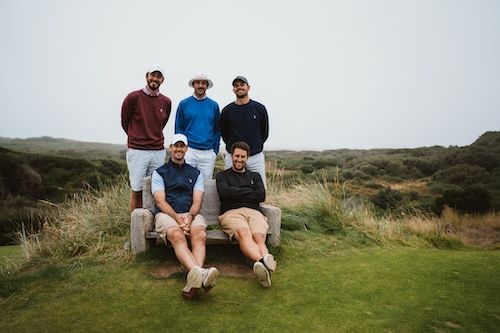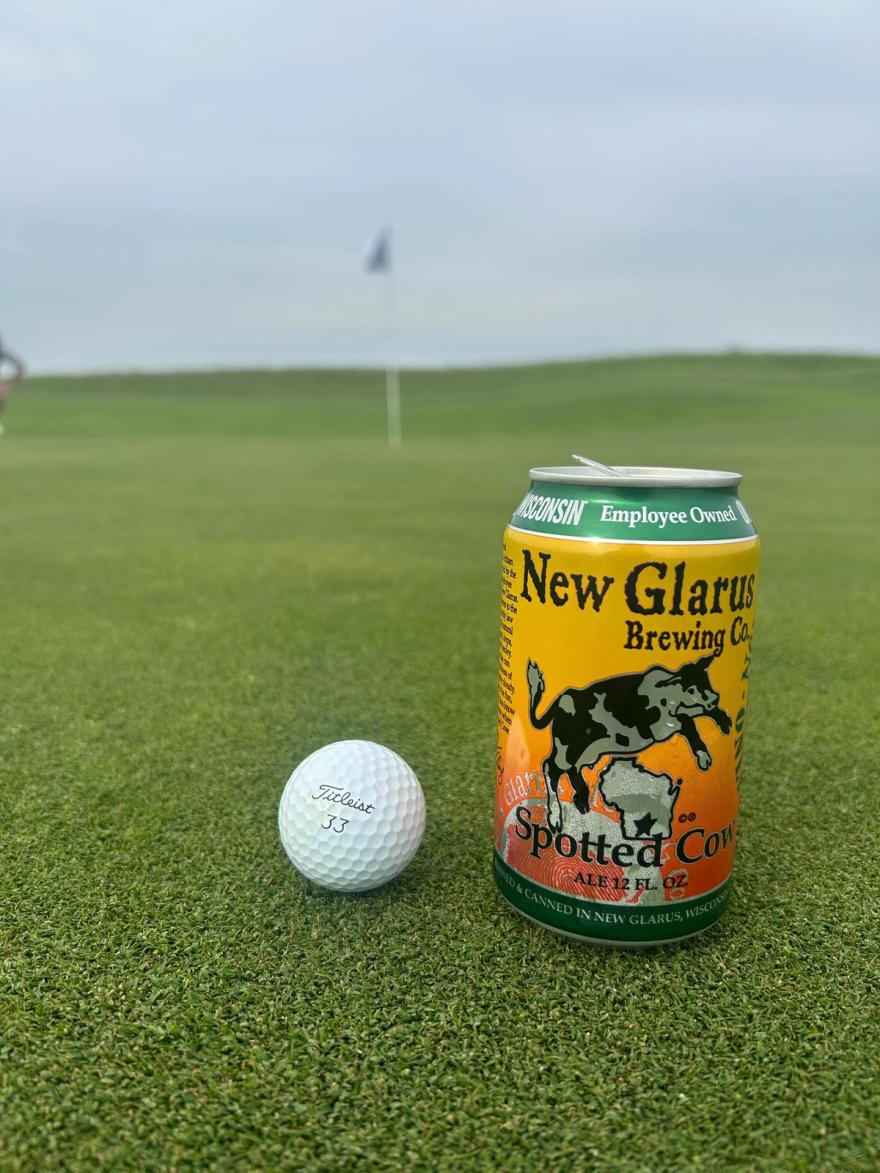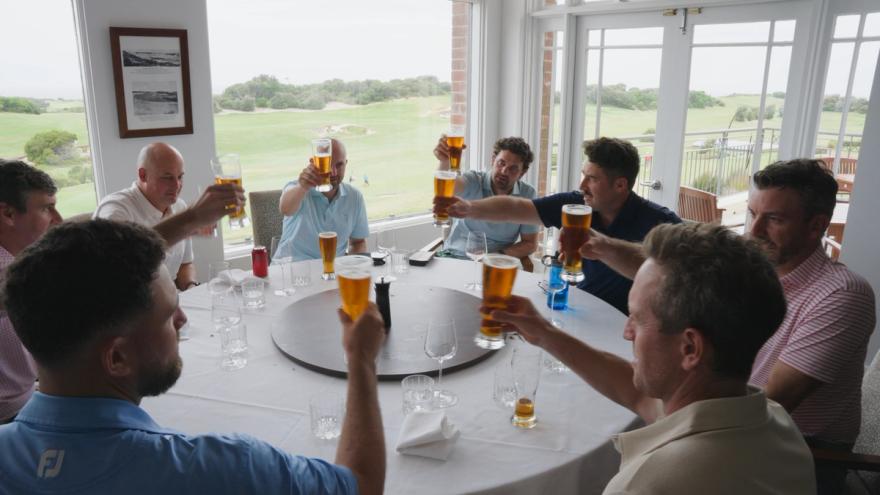Welcome to the fifth installment of GHIN & Tonic. Our hope is that this space serves as a callback to the spirit of the original writing that appeared on No Laying Up dot com: unvarnished, wide-ranging, and somewhat random, but with golf as the loose thread. Some will be more golf-heavy, some golf-light - think TrapDraw Podcast plus some golf sprinkled in. We’ll pass the ball around on these on a weekly basis and all will be personal in nature. And if you can’t figure out which sections are “GHIN” and “Tonic”, that’s on you!
GHIN
Welcome to GHIN & Tonic: Volume 5. I just got back from our NLU Club Championship at Erin Hills, which (no spoilers) I suspect you’re going to enjoy when that video comes out. But on the trip home, I couldn’t stop mulling a question I wanted to throw out for this week’s G&T.
What do we want the PGA Championship to be?
The day after the final round at Valhalla, I threw up a poll on my Twitter account asking that question. I was feeling a little concerned that me and my fellow NLU colleagues were feeling a little disconnected from public sentiment because we didn’t find the course — or the setup — particularly compelling. The final round, which saw Xander Schauffele hold off Bryson DeChambeau and Viktor Hovland, was certainly enjoyable. But what exactly differentiated it from a regular event other than the fact that we don’t get to see players like DeChambeau and Schauffele face each other in major championships?
Schauffele shot 65 to win, but it certainly didn’t feel like one of the most memorable final rounds in a major. He missed a bunch of shots, but the penalty for missing felt (at times) nonexistent. On the 7th hole, for example, Schauffele went for the green in two on the Par 5. He came up well short, dumping it in the front bunker. He had short-sided himself to a tucked pin.
“Gosh, that’s a terrible mistake,” said Trevor Immelman on the CBS broadcast.
When Schauffele got to his ball, however, nothing about the next shot felt particularly terrifying. He splashed it out, watched it settle beyond the pin, and then made a relatively benign 11-footer for birdie. You could have convinced me I was watching the John Deere or the 3M, and most of the NLU gang felt similarly.
My inbox and my mentions, however, contained plenty of missives from golf fans who seemed convinced we were missing something, or that we were discounting Schauffele’s performance somehow because his personality doesn’t excite us. Who cares whether the course was soft or easy, went the majority of the complaints. Doesn’t everyone have to play it?
I would first counter that by reminding you that everyone is welcome to enjoy (or not enjoy) a major for any set of reasons. If your enjoyment of Valhalla was diminished because Tron or Soly were griping that the setup was lame, you might want to ask yourself why you’re giving someone that kind of power over you. Personally, I like golf tournaments where danger lurks and the best players still walk a tightrope of tension. Steph Curry and Caitlin Clark are compelling because they can throw a basketball into a small metal cylinder from 35 feet away. If the basket were bigger, a lot of players would be able to do what they do, and it would diminish their skill. I think you can look at golf similarly. Valhalla made the basket big for pretty much everyone. Statistically, as Justin Ray pointed out, it was the lowest cumulative score to par by 254 shots!
What is the PGA Championship’s identity? And does it even need one? The majority of answers to my poll question (nearly 3,800 people answered) seem to think it doesn’t matter.
I think you can make the case that each major championship really should represent a unique test of skill.
The Masters is about your ability to hit approach shots from uneven lies, and you have to do it with the weight of knowing a victory gives you access to the most exclusive room in golf.
The U.S. Open tests your patience and your ability to handle difficult conditions that aren’t always fair.
The Open Championship should be about hitting shots affected by the wind, and about how the ground is an essential element of the game. Bounces might be unfair, but you also might hit a mediocre shot that works out to your benefit.
Should the PGA Championship test your ability to go as low as possible?
I would hate that for Brooks Koepka, who has won three PGA Championships in the last seven years. He thrives when conditions are tough and you have to thread a needle between chasing birdies and avoiding bogeys.
I would love it for Bryson DeChambeau, who has shown us he can shoot 58 on a day where low scores are out there. I would even listen to the case that DeChambeau understands, better than most, that golf is an entertainment product. If you want to draw in new fans, why not encourage one of the majors to feel like a turkey shoot?
Personally, I would love it if the PGA Championship had never gone away from its match play format. (It ended in 1957.) Match play is a unique skill in golf, and it would be great if we recognized its importance. But the fear of getting a final where two journeymen face each other terrifies television executives, so that’s never coming back. I suspect the PGA of America will continue to let the course and weather dictate what each PGA Championship looks like, without a ton of consistency every year. Some years, we’ll get Valhalla, and other years we’ll get a test like Southern Hills, where bogies were plentiful.
Regardless of how you feel, don’t let our (correct but smug) arguments diminish your love for Valhalla or Schauffele. If that final round made you feel something, that’s fantastic.

Subscribe to No Laying Up Emails
If you enjoy NLU content, you'll enjoy NLU emails. We send our newsletter twice a month, and we send a Weekly Digest email. Get monthly deals, exclusive content, and regular updates on all things No Laying Up #GetInvolved

TONIC:
What I’m watching:
Last year when Barbie and Oppenheimer were a huge success, there was a ton of discourse about how movies were truly “back” and that those two films — plus the previous year’s success of Top Gun: Maverick — were proof that the theater experience remains an essential part of American life. All was well.
Suddenly, the movie industry is back in panic mode again after two movies (Challengers and The Fall Guy) opened to positive reviews and had A-list stars in them, yet somehow they lasted all of two weeks in the theaters before being sent down to exist in the land on-demand at-home purgatory.
I haven’t seen Challengers yet, but I did catch The Fall Guy, and it was a delightful theater experience. It was just smart enough to feel clever, and just dumb enough to feel mindlessly fun. It winked at the audience in a way that felt like you were always in on the joke, poking at Hollywood movie tropes, but it was still unique and creative enough to make you smile when the obvious beats landed. It even featured a killer action sequence set to Phil Collins’s “Against All Odds” which is something I never knew I wanted in a movie.
If it’s still hanging on at a cinema near you, I’d recommend going. If nothing else, it’s proof that Ryan Gosling remains the most charismatic man alive not named Donald Glover. I wish we could get the two of them together for a buddy cop movie.

In other movie news, I am giddy over the prospect of watching the alluring mess that is “Megalopolis,” the Francis Ford Coppola film that just debuted at Cannes. It seems likely it’s going to be Coppola’s final film, and early reviews don’t know what to make of it. New York Magazine called it a “miasma of magic, melodrama, corny emotionality, and gangster-movie politics” and also said the film is “totally nuts.”
I’ve been texting with Tim Simmons and D.J. Piehowski about it and talking to Big Randy about it. I think it might be ripe for our first-ever episode of “Imperfect Club.” Sometimes debating and discussing a work of art that’s polarizing and bizarre makes for the best kind of fun. Stay tuned.
What I’m reading:
Two books have found their way onto my nightstand, and I would encourage you to check out both of them. One of them is out already, and the other comes out next week.
The first is “Dogland” by Tommy Tomlinson, available now. It’s the inside look at the Westminster dog show, and it’s a really fun and moving exploration of why humans connect so strongly with dogs. The book is really funny at times, but it’s also beautiful in many stretches.
The second is “There Was Nothing You Could Do” by Stephen Hyden, a book about Bruce Springsteen’s “Born In The U.S.A.” album. It comes out May 28th, and you’re likely to hear us talk about it on the TrapDraw in June. There has been a ton of ink spilled about Born To Run and Nebraska, but Hyden (my favorite music critic) tackles Springsteen’s most bombastic album and puts it into context of what it meant about the changing times and Springsteen’s place in them.
Reader feedback I’m interested in:
This week at Erin Hills, I finally tried the homemade chocolate chip cookie that everyone raves about, but the bratwurst in a pretzel bun that the course serves at its halfway house blew my mind even more than the cookie. It might be one of my favorite golf course menu items anywhere. The perfect blend of salty meat, spicy mustard and a bun that doesn’t getting soggy.

It also got me thinking: What’s your favorite?
I know that the Snapper Soup at Pine Valley and the burger dog at Olympic Club are some of the most famous examples, but I haven’t been invited to play either of those two tracks yet so I’ll hold off on reviewing them. I’m curious about a few lesser-known but still excellent cuisine at your regular track. Email me with some suggestions and I’ll see if my associate, Mr. Tron Carter, will approve a tasting menu tour of the globe’s finest grill rooms.
Kevin Van Valkenburg is the Editorial Director of No Laying Up
Email him at kvv@nolayingup.com
Join The Nest
Established in 2019, The Nest is NLU's growing community of avid golfers. Membership is only $90 a year and includes 15% off at the Pro Shop, exclusive content like a monthly Nest Member podcast and other behind-the-scenes videos, early access to events, and more newsletter-exclusive written content from the team when you join The Nest.
